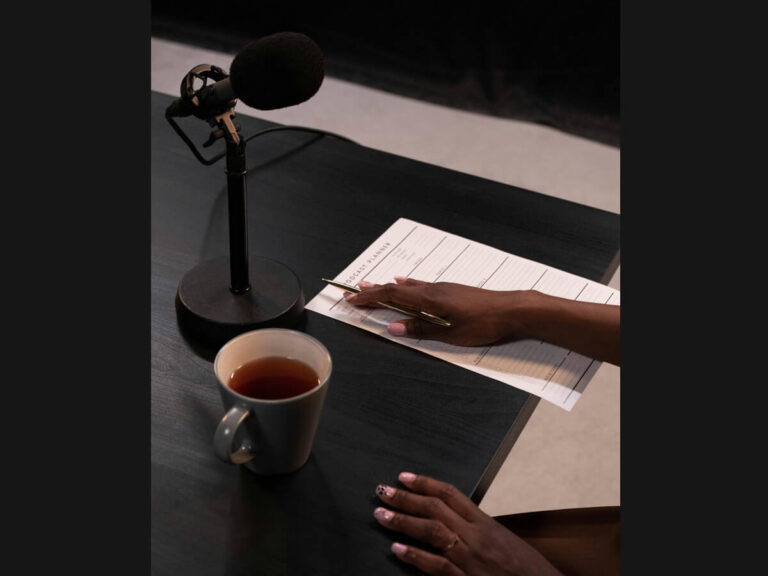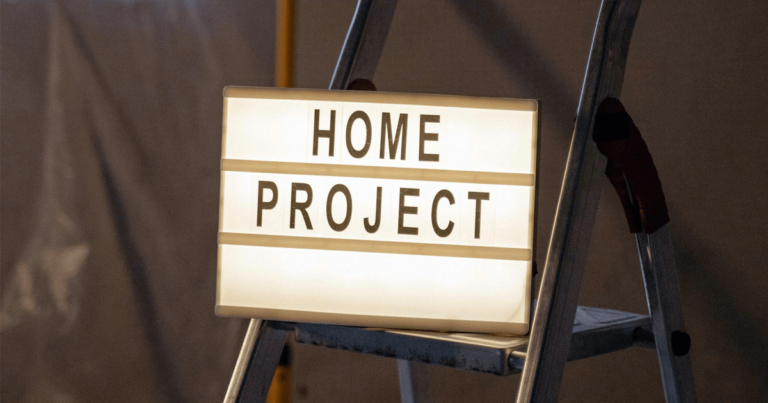How To Create a Peaceful Home In Chaos – Slow Living in the In-Between
Slow Living While Renovating: Finding a Peaceful Home
A peaceful home doesn’t have to be picture-perfect—or even fully functional. I’ve been reminding myself of that lately, usually while hauling dusty bags of supplies between our apartment and the studio we’re renovating. (Check out my studio apartment renovation diary here, if you are interested!) The truth? This little 16 m² attic flat doesn’t even have a working toilet yet.
But somehow, in the middle of commuting grime and growing to-do lists, I’ve started catching moments of calm. Small signs that peace isn’t the result of a finished space—it’s something you can feel even in the chaos, if you build it with intention.
Even though we sleep in our own apartment, the renovation still manages to sneak into every part of life—our thoughts, routines, wallets, and energy (and our closet, where the new shower is waiting to be built in). And one day, mid-scroll through “perfect minimalism” on Pinterest, it hit me:
Why do I keep telling myself that peace will come after the renovation?
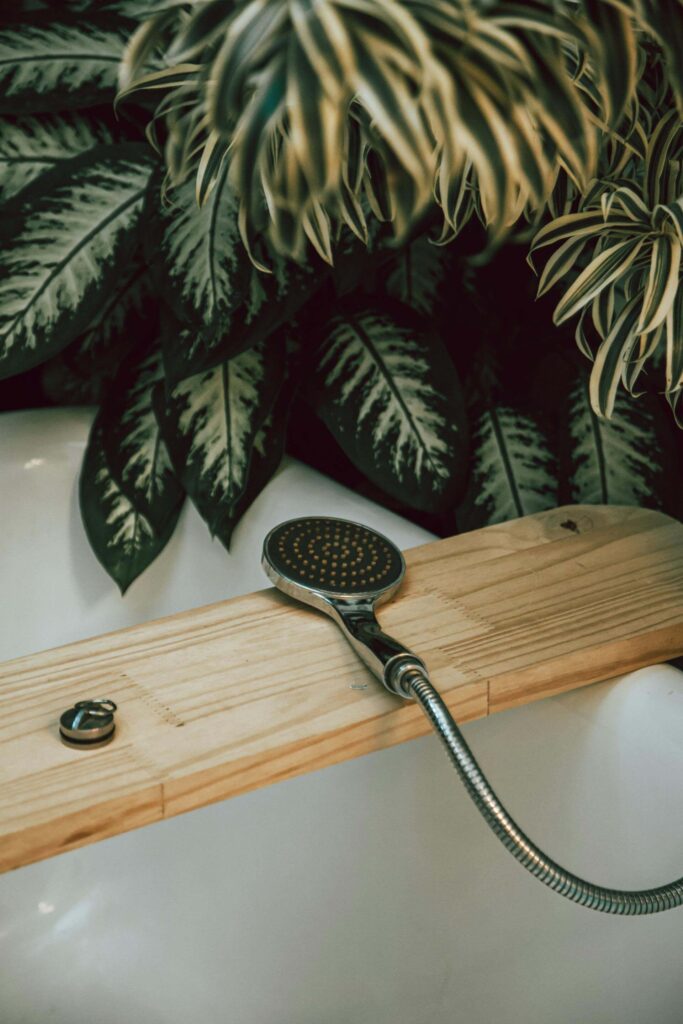
You Can Have a Peaceful Home Without Having It All Together
If you’re anything like me, you’ve probably delayed peace more times than you can count. “I’ll rest once this is over.” “I’ll feel good when it’s done.” But renovations—like life—rarely wrap up on schedule. So I’ve been learning to lean into the in-between.
The checklist is infinite, the dust won’t stay in one place, and your mind starts to believe peace is something that lives on the other side of “done.”
But what if it isn’t?
I used to think that slow living required a finished space, quiet corners, and the right furniture in the right place. But these days, standing inside a completely empty, under-construction studio with no bathroom and a half-built vision, I’m learning that peace is something you practice now—not something you move into later.
Minimalism, slow living, and simple design aren’t end goals—they’re tools we can use in real time to stay present, calm, and grounded… even in the mess.
So let me ask: Have you ever postponed your peace, thinking it would arrive once everything looked perfect?
What Is Slow Living in the In-Between?
We often imagine a peaceful home as something we arrive at—a calm, beautiful space that comes after everything is fixed, cleaned, finished. But what if a peaceful home doesn’t depend on perfect surroundings at all? What if it starts somewhere else—like in a calm breath between tasks, or in a tiny moment where you simply choose presence over pressure?
That’s the heart of slow living, especially in the in-between phases of life. How to choose intention over urgency. It’s pausing for a slow morning coffee surrounded by dust and tools. It’s making space for gratitude even when nothing feels “done.” Slow living is less about the pace of your schedule and more about the rhythm of your attention. It’s saying: I’m here, fully—even if here is halfway.
And in-between can mean a lot of things. It’s renovation, but it’s also emotional transition: the time between clarity and confusion, or between an old chapter and a new one not yet written. These are fragile, fleeting moments that usually slip by unnoticed. But they’re also where peace can quietly take root—if we let it.
The real foundation of a peaceful home isn’t wood or tile, but it’s your state of mind. You can plant peace anywhere, in any condition, if your inner world is calm and connected. Because at the end of it all, life is just a series of disappearing moments.
What stays with us isn’t the flawless design or the perfectly folded laundry. What stays are the feelings we allow, the memories we create, and the relationships we tend to—especially when everything around us is chaotic.
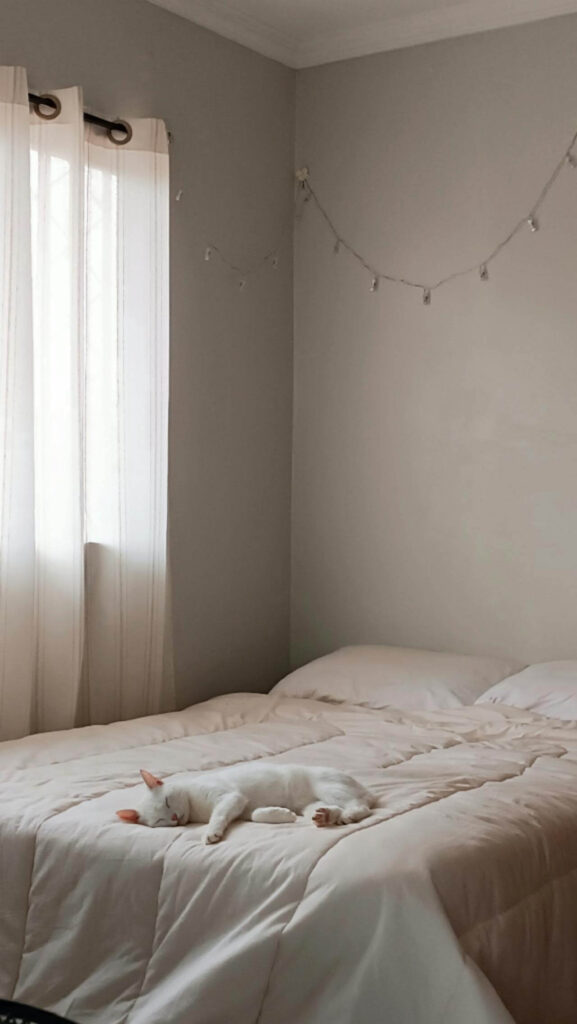
Minimalist Life: How Less Clutter Creates a Peaceful Home
A peaceful home doesn’t start with the perfect bookshelf or a color-coded kitchen. It begins when we stop equating peace with perfection. That’s what minimalism taught me—not just how to own less, but how to want less in the first place.
In the middle of a renovation, minimalism becomes less of an aesthetic and more of a survival tool. When the dust never really settles and your “workspace” is a pile of tile samples on the floor, letting go of visual control becomes an act of self-preservation. It’s not about creating a showroom—it’s about carving out just enough calm to stay centered.
The beauty of the minimalist life
The beauty lies in how it clears more than just physical space. When there’s less clutter, there’s less noise—both outside and inside. And the less your surroundings demand from you, the more space you have to breathe, to think, to feel. Even if the walls are half-painted and the cabinet doors are still in the car.
Here’s the truth: your space doesn’t need to be “done” to feel peaceful. It doesn’t need to be perfect to feel like home. Peaceful homes often come to life not when everything is in place, but when you finally decide you don’t need to chase more. When you stop waiting for later, and you start living gently now.
One mantra I come back to when I feel overwhelmed is:
“Peace isn’t what you buy — it’s what you let go.”
Let go of the urgency. Let go of the comparison. Let go of needing everything to be ready before you can rest. And be nice in your everydays.
Minimalism isn’t about cold, empty spaces—it’s about a full, clear mind. It’s about choosing simple living as a foundation for a more intentional life. When your values are louder than the mess around you, you’re already living in a peaceful home.
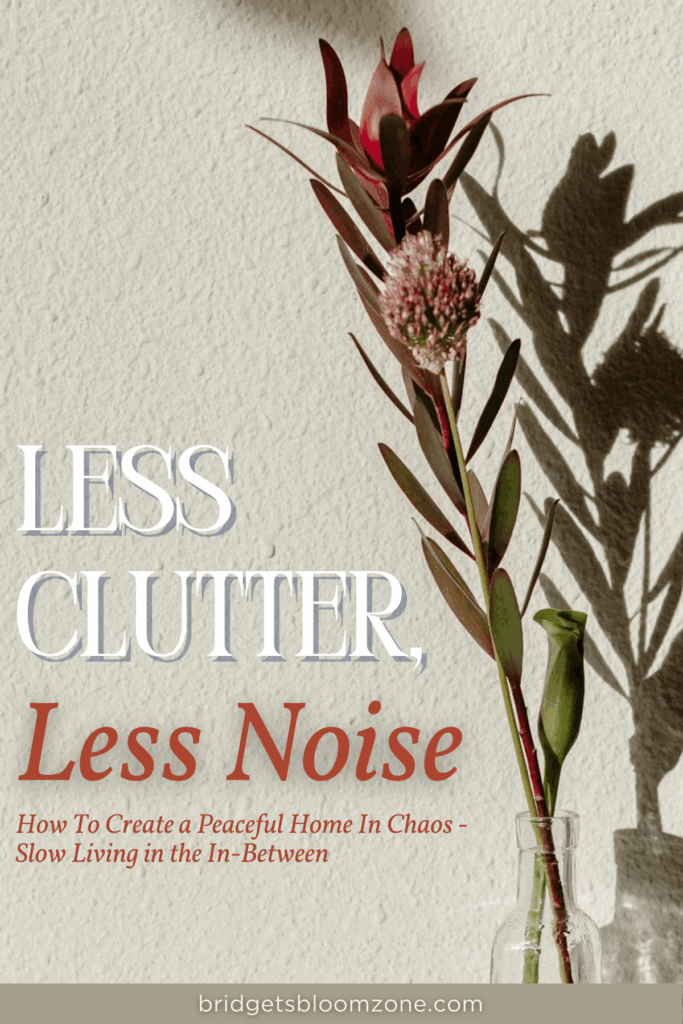
Design Tips to Support a Peaceful Home and Slow Living
You don’t need a finished flat to live in a peaceful home. You just need intention in how you shape what’s already there. Good design isn’t about how expensive something is, or how beautiful it is—it’s about how well it supports your nervous system.
But, of course there are some grounded design strategies to help you create calmness, simplicity, and breathing room – in any spaces, city condo, country cottage, or shared apartment.
1. Less visible clutter – smart storage system
- Declutter your home – From time to time decluttering gives us a reset in our minds. Stuff is just accumulating, and we tend to delay organizing things. It can add a huge motivation in other tasks too!
- Hidden storages are the best no just in small spaces, but also in every space.
- Multi-use furniture is your best friend in a small space. A fold-down table becomes a work zone or dinner spot, and hides during your yoga session. A bench hides storage and seats two.
2. Clean visible spaces – smart design and hygienic aspects
- Vsual clarity and mental calm is supported by both clean visible spaces. A tidy, thoughtfully arranged environment not only looks better but is also easy to clean.
- Healthy environment begins with hygiene – it affects both our physical and mental well-being.
3. Empty walls, empty corners – minimalist space organization
- White space isn’t wasted space. It’s where your eyes and your mind can rest. Give your walls and floors room to breathe. Don’t rush to fill every corner.
- One art piece, one rug, or one plant per zone can speak more powerfully than a cluttered gallery wall. When you leave room around things, you create the visual equivalent of a deep breath.
4. Use what you have
- Rearranging, reusing, or simplifying can often bring more peace than buying something new.
5. Natural materials – to give style and peaceful vibes
In nature the person’s mind calms down – it is scientifically proven. Our nervous system returns to a calm state. It can be used in your home: natural, real materials have a similar effect.
- Choose real wooden floors
- Ceramics
- Natural textiles
- For brave ones: adobe plaster
- And who has just started building: natural building materials
6. Electric smog – organize the details and your energy
It is a hidden dimension in a peaceful home: invisible waves influence our biorhythm. Try to reduce it as much as you can – I know it is not easy in a condo in a city. But still you can do some easy steps to better your home (and save some extra cents).
- Organize visible cables!
- Turn off, or better to unplug that is not needed.
- Don’t sleep with your phone next to your head – there are some design solutions for this, I am planing to write an article about it.
- I would simply unplug the wifi after 8 pm – some analog free time before sleeping can work wonders. Even helps your time management, not to mention the slowing-down effect at the end of the day – acheiving a little bit of peace does not need more complication.
7. The Power of “Own Space” – to have a little corner to retreat
If your whole home feels chaotic, you only need one calm spot to reset. Create a cozy retreat point, even if it’s temporary, for example:
- A soft chair with a blanket to rest or read
- A home desk where everything is just under your control
- A hammock in the garden
8. Stop scrolling, start noticing
Turn off the home inspo for a while. Look at your real life—what already feels good?
These details whisper “you’re safe here.” In a world of ongoing renovation, having one intentional corner anchors your entire day. That is a peaceful home, even if it’s just 2 square meters of calm.

Gratitude as a Design Tool for a Peaceful Home
To achieve a peaceful home design, begin planning in your heart.
When everything around you feels unfinished, gratitude becomes your soft place to land.
Gratitude for me is a design tool.
A lens that helps to see the peaceful home that’s already forming, long before the last box is unpacked.
Gratitude helps you anchor yourself in the present.
You slow down, instead of tasks to be done, you arrive to the space and start noticing hidden layers of it.
Gratitude allows you to notice small wins.
And this can shift your mindset more towards creating a peaceful home. Because, the peaceful home you’re building begins with how you speak to yourself in the middle of it all.
I remember the turning point in my mind, when I just let go all of the stress that an “uncontrollable” construction can cause.
In endless time, without a clock, we just demolished, plastered, drilled, everything collapsed, broke, and felt like almost nothing has happened – only the days and weeks passed in the calendar. And the tiler came, and messed up everything, serious mistakes were made, and we had to tear down our new tiles. This was it – for a minute, I felt like I had arrived.
That’s when I understood: the heart of a peaceful home is made of calm attention, not completed checklists.
Let your gratitude guide your gaze. Focus on what is working. What is already supporting you. Peace isn’t something you finish. It’s something you practice.
What corner of your home are you most grateful for today?
A Gentle Reminder — You Don’t Have to Wait
You don’t need matching curtains or finished walls to create a peaceful home. You don’t even need quiet outside. What you need—what you’ve always had—is the ability to pause, breathe, and be gentle with yourself in this moment.
The “in-between” is where the foundation of slow living is laid. To be present and appreciate the things that work, and the things that you already own.
A peaceful home begins when you decide to stop chasing perfection and start choosing presence.
So let go of the rush.
Let go of the idea that calm only comes later.
You’re already home. And it can already be peaceful—right now.
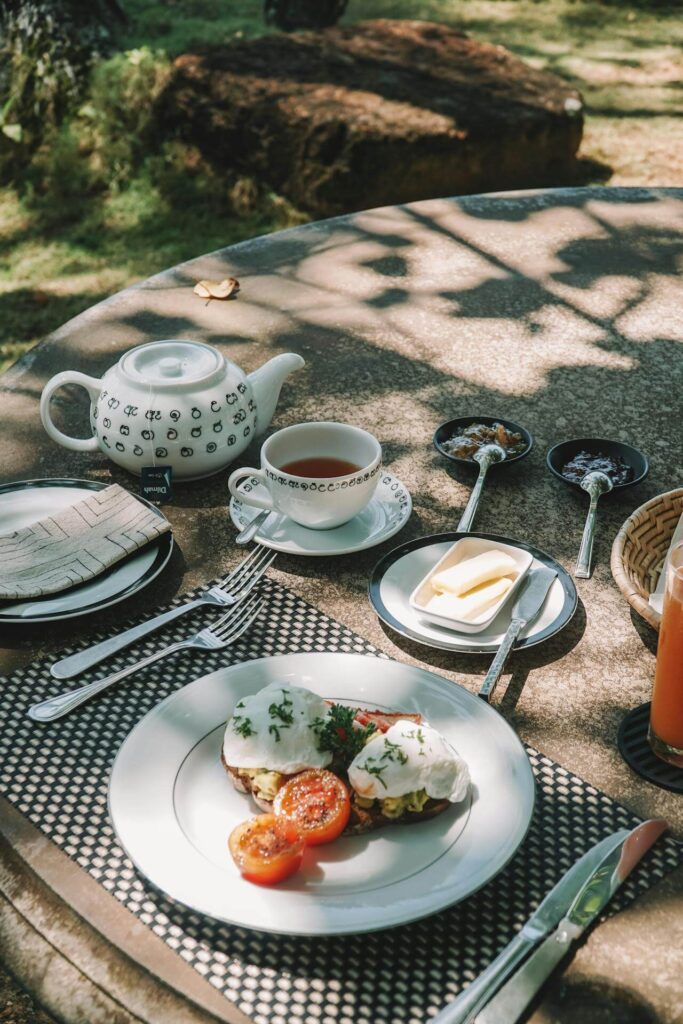
I’d love to hear from you:
Are you in the middle of a renovation or life transition? What’s one small way you’ve found calm lately?
Let’s share stories and build peaceful homes together!
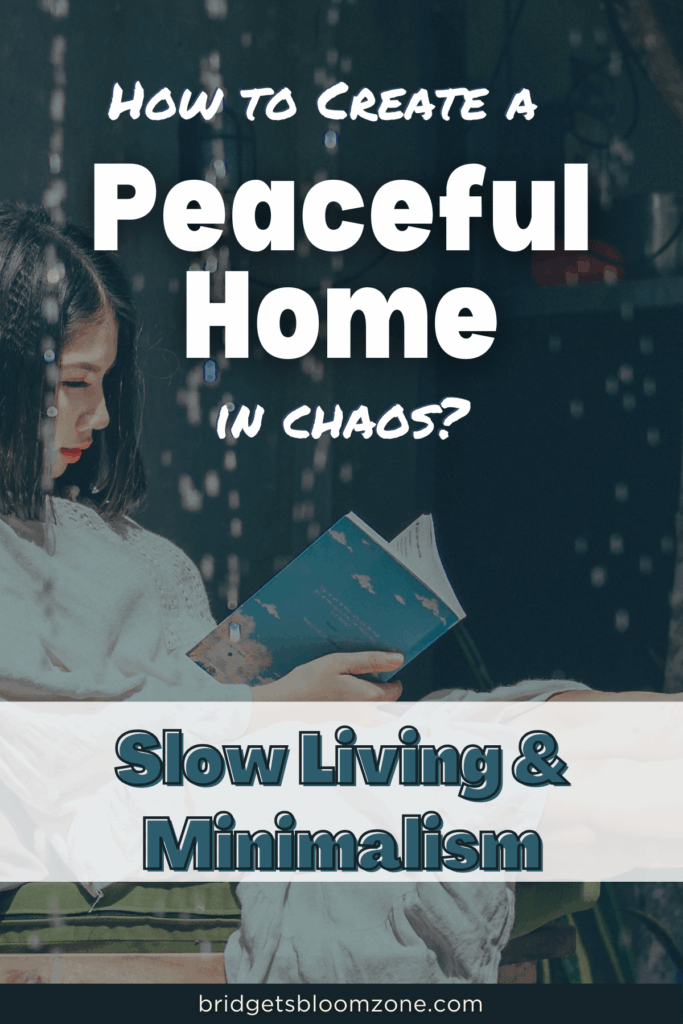
Want more inspiration?
You might enjoy these related reads:
Overcoming Stress and Anxiety – You Need to Change Only 1 Thing!
Small kitchen ideas – maximize your tiny space for the best comfort!
Or dive into my tiny studio apartment renovation diary – this is the “main hub”, filled with practical advice from an architect (me)!



